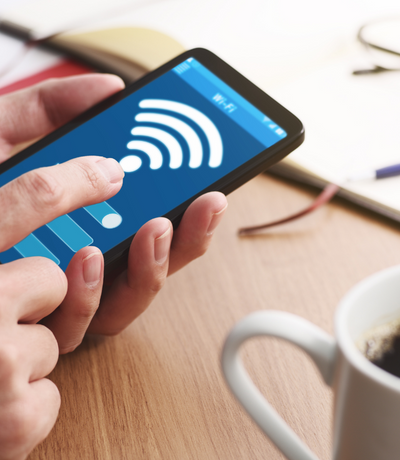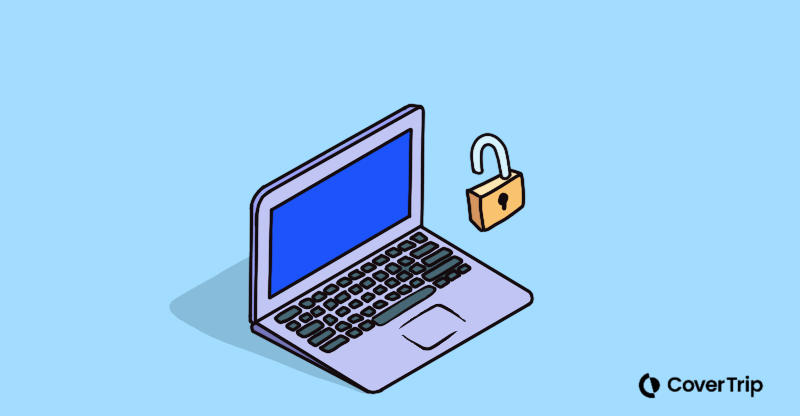How to Safely Connect to Wi-Fi
19 August 2022
Public Wi-Fi is a huge convenience for checking social media or reading an email, for sure. The free Wi-Fi you encounter at airports, coffee shops, even doctor’s offices may require you to log in with a public password, but that shouldn’t give you the impression that it’s secure.
When you’re at home, you’re in a safe wireless network because you:
- use a strong router password
- limit what devices can access the secure network
- have encryption in place
You’re in control at home. At a hotel or rental, however, you have to act like you’re on a public network by changing your usual browsing behavior.
Read on to understand how to make sure you are connecting to the Wi-Fi safely.

1. Use a VPN
Digital security experts recommend always using a VPN when you travel. It won’t save you if your device already has some kind of malware installed, but at least it will keep you as hidden as possible on pubic networks.
When you switch on a VPN, it creates an encrypted connection (sometimes referred to as a ‘tunnel’) and all your internet traffic is routed through the tunnel. Data coming to your device makes the same trip through the encrypted connection. VPNs make it harder for advertisers and others to track you online, but they also hide the contents of your web traffic and provide some protection against threats like malware, scams, and phishing sites.
The key is to use a VPN you own and pay for. The free VPN tools sometimes collect your data.
2. Make certain you’re connecting to the correct network
Whenever you’re at a hotel, rented lodging, or conference, make sure you’re connecting to the official system. Double-check the name of the Wi-Fi because someone could easily set up a network with a slight change in the name and that someone could be a hacker.
HiltonHonors is not the same as HiltonsHonors!
When you’re traveling, it’s easy to become distracted and choose the strongest, open signal but you should always pick the legitimate network plus a password to grant access.
3. Turn off auto connect
Because you’ll want to make sure you are connecting to the official system each time, cybersecurity experts recommend turning off autoconnect. You can do this in your device’s settings. This will also protect your device from automatically connecting to random open hotspots, which could be set up for the express purpose of stealing personal information.
New hacking tools are available for free online and they make it easy, even for users with low technical skills, to hijack your info. Set your phone to ‘Ask to join networks’ so you’ll be notified before it connects and you can double check it.
Pro tip: while you’re updating settings, turn off the Bluetooth too. You can always turn it back on when you need it, but turn it off until you do.
4. Control your passwords
Before you travel, change the passwords on your apps. If you have a password manager installed, use long, strong passwords, and multi-factor authentication, you’ll be much more safe.
5. Update your software and apps
Before you travel, take the time to update your software and apps. Most software updates are released because they fix newly discovered vulnerabilities, so you’ll want to have the latest upgrade.
Once an update is available, every hacker in the world knows the latest holes in the previous iteration. If you haven’t patched that hole, your device is exposed to opportunistic hackers.
Pro tip: do this step at home in a secure network, never on a public network. It’s possible for hackers to trigger a fake software update on a public network.
6. Check for HTTP with an S
Much of the early risk of using public Wi-Fi was controlled when websites became encrypted with HTTPS (hypertext transfer protocol secure). HTTPS makes it much harder for attackers to intercept communications between your browser and the website because the data is no longer in plain text―it’s encrypted.
These days, more than 99% of all browsing time is on HTTPS websites, but if you’re using an open, unsecured public network all bets are off and using the steps in this article are critical.
7. Avoid sites that require any private info
Avoid logging in to any online accounts, like a bank for example, that store your sensitive information.
Also avoid online shopping sites like eBay or Amazon, and steer clear of submitting any personal details while you’re connected to your lodging’s Wi-Fi even if you had to type in a password to use it.
Many Wi-Fi networks in hotels will prompt you to install a ‘digital certificate’ to use their internet. To be fair, they are often using that to avoid malware getting into their network, but it also lets them read your traffic even if you’re connecting to a site that uses HTTPS.
Pro tip: If you must access an online account, turn off the Wi-Fi on your phone and connect with your mobile data plan instead.
8. Keep a lean Wi-Fi history and log out
Delete any unused Wi-Fi networks from your devices to avoid the possibility that you’ll connect to a fake access point accidentally. Make sure to log out of all the accounts you access while traveling.
You don’t have to be afraid of public Wi-Fi if you’re using the steps outlined here. HTTP and VPNs have made it much harder for hackers to exploit your data. Secure your device settings, use good passwords, and be sensible about what you’re passing through the network and the Wi-Fi won’t pose a huge risk while you’re traveling.
Related topics
Damian Tysdal is the founder of CoverTrip, and is a licensed agent for travel insurance (MA 1883287). He believes travel insurance should be easier to understand, and started the first travel insurance blog in 2006.
